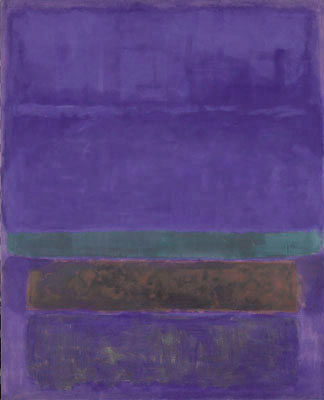Week One - Two Cultures
Week One - Two Cultures
 |
| Mary Louise Parker and Ben Shenkman in David Auburn's PROOF. |
To be frank, most students on this campus haven’t the slightest clue how much work is involved in being a theater major, let alone its significance. It’s remarkably easy to dismiss my frustration, however, simply by pointing out that I am so alienated from the scientific side of the university (figuratively and physically) that I actually get scared at the thought of having to take a class in south campus. Whether that’s due to the fear of getting lost or of having to do math again is anyone’s guess, but either way, Snow’s claim regarding “The Two Cultures” is obvious.
 |
| Mark Rothko, Untitled, 1952 |
In his lecture and subsequent writings, Snow articulates the idea of a humanity divided into two major communities: science and the literary. He explains the gap that separates these two groups needs to be closed, likely through the emergence of a new, third culture.
John Brockman in his essay “The Third Culture” suggests that this third culture is going to grow out of the science community and essentially exclude the arts from this new, unified culture. The argument that Victoria Vesna proposes in “Third Culture: Being in Between” says otherwise. She says that the blending of personalities and opportunities work best in a university setting and that the third culture most likely to happen involves a blend of the two cultures that embraces the digital advancements which affect both spheres.
 |
| The Wacom Intuos Pro Paper is a staple for all designers in the UCLA School of Theater, Film and Television. |
Personally, I find that my outlook aligns best with Vesna. My bias towards the arts aside, the most innovative ideas take elements of both cultures. Plays like Proof, written by David Auburn, allow art to tell a story key to the sciences while artists like Rothko take advantage of scientific advancements to further develop their craft. The aforementioned works deal with products of art using science as a point of reference, but the opposite is also true. Wacom is a company dedicated to creating tools for digital artists and a prime example of the ways that art and science can come together. The company’s tablets use touch-sensitive screen technology and intricate computer science to develop a product that is used by digital artists, theatrical designers, storyboard artists, and many more.
Clearly a marriage between Snow’s alleged cultures is possible, but nowhere near close to being complete. The work done in the professional world as well as within the university ought to come together to bridge this unnecessary gap.
Brockman, John. The Third Culture. New York, Touchstone, 2010.
Jones, Kenneth. “Proof Is Broadway's Humane Enigma Beginning on Oct. 10.” Playbill, PLAYBILL INC., 10 Oct. 2000, www.playbill.com/article/proof-is-broadways-humane-enigma-beginning-on-oct-10-com-92363. Accessed 10 Apr. 2017.
“Mark Rothko Biography.” Mark Rothko, National Gallery of Art, www.nga.gov/content/ngaweb/features/slideshows/mark-rothko.html#slide_33. Accessed 10 Apr. 2017.
Snow, C. P., and Stefan Collini. The Two Cultures. New York, Cambridge University Press, 2014.
Vesna, Victoria. “Toward a Third Culture: Being In Between.” Leonardo, vol. 34, no. 2, 2001, pp. 121–125., doi:10.1162/002409401750184672.
I enjoyed reading what you have to say. You provided a very good example at the end by discussing the use of a tablet which brings computer sciences and the arts together.
ReplyDelete